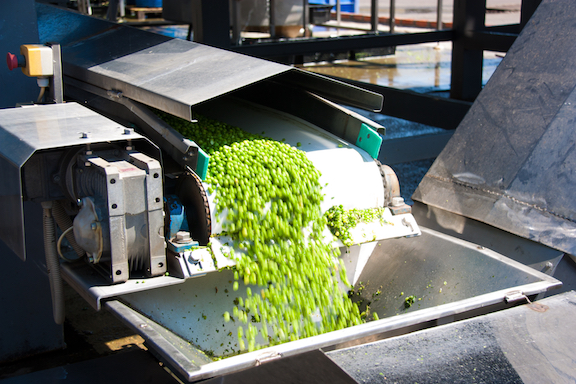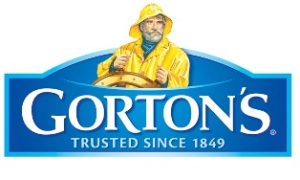
By John Hanselman, Chairman and CEO, Vanguard Renewables
Food waste is a critical operations and management challenge that food manufacturers, producers, and users face daily. According to a 2014 United States Environmental Protection Agency (US EPA) study, America throws away more than 38 million tons of food annually or 30-40% of the total food supply. That’s more than the weight of 100 Empire State Buildings. USDA 2010 estimates equate that to approximately $161 billion worth of food. This has far-reaching impacts on food security, disposal costs, resource conservation, and climate change. Importantly, this is becoming a major area of concern for customers across America. More and more manufacturers are being pressured to think and account for the handling of their waste stream.
Effective treatment of food waste can be turned from a liability to a point of pride and cost reduction. Forty percent of total US waste stream is organics that has been historically landfilled but can be recycled. Recycling reduces the cost of organics “disposal” and produces renewable energy and highly potent fertilizer. Recycling this waste seems like an easy decision to make; however, widespread adoption requires behavioral change on the part of food waste generators. With few remaining landfills and a need to reduce the methane greenhouse gas emissions from food waste decomposition, food waste generators must get serious about diverting the byproduct of their operations from disposal. The early adopters are already creating sustainable business practices, but an enormous amount of food waste is not recycled, representing an environmental hazard and unrealized business revenue. The primary carrot for behavioral change is the lower cost of recycling compared to disposal.
What is food waste?
 The Food and Agriculture Organization (FAO) defines food waste as food fit for human consumption that is wasted at the retail or consumer level. Food loss differs and represents production, postharvest, and processing loss. Food waste and food loss combined account for 30% of all food produced globally. Food waste can be as simple as meat trimmings or as insidious as returned defective products in a distribution warehouse. It can be solid or liquid as in manufacturing wash water, beverage manufacturing, and dairy products. It all has the potential to be recycled.
The Food and Agriculture Organization (FAO) defines food waste as food fit for human consumption that is wasted at the retail or consumer level. Food loss differs and represents production, postharvest, and processing loss. Food waste and food loss combined account for 30% of all food produced globally. Food waste can be as simple as meat trimmings or as insidious as returned defective products in a distribution warehouse. It can be solid or liquid as in manufacturing wash water, beverage manufacturing, and dairy products. It all has the potential to be recycled.
Three factors influencing food waste recycling momentum
Three unrelated factors must align to change the way the industry looks at food waste.
Food waste generators must want to become more sustainable.
Consumers make purchasing decisions based on recycling and sustainability. A recent survey by The Recycling Partnership found that 74% of Americans polled said they’d rather spend money at a “green business,” or a business that recycles, and Swytch found that 35 to 40% of employees polled favor working for greener companies. Food waste generators that recycle have an opportunity to present a strong sustainability and brand platform that will generate business. This important market perception combines well with internal cost savings motivation to produce a desire to separate the food waste from regular trash.
Producers must educate their workforce on what is food waste and create programs to separate the organic stream from trash.
The food industry’s challenge is to assess operating processes to identify food waste generation areas and develop a segregation system for food waste recycling. The benefit is reduced waste disposal costs in most markets, less waste overall, increased sustainability, and positive branding opportunities. Whether recycling via composting or anaerobic digestion, training employees about waste segregation is critical to ensuring waste acceptance by the hauler and recycling facility. The separation and recycling of cardboard, previously co-mingled with all other waste, is an example of this model. Today corrugated “cardboard” is recycled more than any other packaging material.
Those companies that choose to recycle their food waste need to inform their customers about all the benefits the program have produced.
Most consumers are either unaware of or unhappy about where commercial food waste ends up being disposed. Companies that have gone through the internal training to recycle their food waste need to communicate their success and sustainability commitment to their customers and shareholders. Utilizing the beneficial carbon equivalencies, such as how many cars on the road or household electric demand that has been reduced, is a straightforward way to relate to customers the impact of the food waste recycling program.
Food waste recycling options and costs
Organics recycling is less expensive than landfill or incinerator disposal because there is a secondary marketplace/revenue generating use for the resulting products. Organics recycling costs vary depending on the product, need for packaging removal prior to recycling facility transfer, hauling distance, and the value of the product resulting from the recycling process.
Option 1 – Anaerobic digestion
The anaerobic digestion (AD) process converts the energy potential in farm and food waste into Renewable Electricity or Renewable Natural Gas. Food waste producers get a safe, clean, and certifiable food waste recycling solution that reduces greenhouse gas emissions as compared to landfills by more than 85%. On-farm AD offers host farms financial and energy-savings benefits, while it provides food waste producers an organics recycling solution that complies with waste bans. With AD, non-farm organic waste is collected and delivered to a dairy farm where it is combined with manure in a sealed biodigester tank where microorganisms convert the sugars, fats, and other compounds into biogas. The biogas generates either Renewable Natural Gas (RNG) or Renewable Electricity and provides heat to the farm. The remaining digested material is odor-free, nutrient-rich fertilizer that increases farm crop yields.
Option 2 – Composting
Composting is another food waste recycling method; however, like landfills, it doesn’t solve methane emissions/air quality issues as those emissions are still present. Composting uses controlled conditions and microorganisms to aerobically decompose organic materials into a soil-like substance and produces carbon dioxide, water, minerals, and stabilized organic matter (compost) as well as heat. Composting facilities can be aerated, unaerated, covered, or not covered. Methods include passive piles, windrows, static piles, and in-vessel composting.
Option 3 – Food recovery and rescue
Organizations are widespread that get edible, unused food to people who don’t have money to purchase it. The Spoiler Alert app is one example of how entities with surplus food can connect to food rescue organizations that pick it up to provide to those in need. Chefs around the globe are turning food previously thrown out into new ingredients and committing to sustainable harvesting and food use like the nose to tail movement.
What can be recycled?
Food manufacturing
Any solid or liquid organic waste from a food manufacturing facility can be recycled. Whether it is discarded material from preparation, fry oil, or off-specification products, most food manufacturing plants have multiple streams of organic waste that is ideal for recycling.
Food service providers and restaurants
All food waste from food preparation and returned from service is recyclable. Here, separating becomes an educational challenge with front-of-house servers/bussers needing to separate customer waste into two separate totes: one for food and the other for paper goods and the back-of-house teams disposing of non-food waste separately from wrapping or food preparation materials. Fats, oils, and grease and the wash water from cleaning grease traps can also be recycled.
Food waste recycling front runners
Gorton’s seafood sustainability program leadership
 In 2017, Gorton’s made a significant change in a waste stream that had been in place for decades. As part of government regulations, Gorton’s is required to pretreat wastewater generated at the plant before sending the effluent to the city’s municipal wastewater treatment plant. One of the main byproducts from that process is sludge, a semi-solid slurry separated from the water. To properly dispose of sludge, Gorton’s historically had to take many complicated steps that required the significant use of chemicals, equipment, and labor.
In 2017, Gorton’s made a significant change in a waste stream that had been in place for decades. As part of government regulations, Gorton’s is required to pretreat wastewater generated at the plant before sending the effluent to the city’s municipal wastewater treatment plant. One of the main byproducts from that process is sludge, a semi-solid slurry separated from the water. To properly dispose of sludge, Gorton’s historically had to take many complicated steps that required the significant use of chemicals, equipment, and labor.
In spring 2017, Gorton’s partnered with Vanguard Renewables to begin trials on a new way to dispose of sludge and solve Gorton’s sludge challenges using the Farm Powered Organics to Energy anaerobic digestion process that converts the sludge into electricity. Gorton’s gets a green, safe, clean, and certifiable sludge waste solution. At the farm where the digester is located, Farm Powered anaerobic digestion eliminates greenhouse gas emissions and groundwater contamination from manure and provides low-cost renewable energy, organic fertilizer, and free heat and hot water to the farm. This is a significant green milestone for Gorton’s that has improved safety, labor savings, alleviated regulatory concerns, and freed up real estate in the plant.
Cabot Creamery is farm powered
![]() The scope of Cabot Creamery Co-operative’s sustainability work is literally from farm-to-fork. All of the milk from Barstow’s Dairy in Hadley, MA (as well as many others), is sent to Cabot’s West Springfield Creamery Plant to produce butter and other specialty dairy products. Cabot’s food waste is combined with 100% of the manure produced at Barstow’s Longview Farm in a Vanguard Renewables anaerobic digester. That combination produces renewable natural gas that is used to create electricity, which in turn is sent back to the Cabot plant. All the electricity needed to churn Cabot butter at the co-op’s West Springfield plant is Farm Powered by Vanguard Renewables. This is Farm Powered Organics-to-Energy in action.
The scope of Cabot Creamery Co-operative’s sustainability work is literally from farm-to-fork. All of the milk from Barstow’s Dairy in Hadley, MA (as well as many others), is sent to Cabot’s West Springfield Creamery Plant to produce butter and other specialty dairy products. Cabot’s food waste is combined with 100% of the manure produced at Barstow’s Longview Farm in a Vanguard Renewables anaerobic digester. That combination produces renewable natural gas that is used to create electricity, which in turn is sent back to the Cabot plant. All the electricity needed to churn Cabot butter at the co-op’s West Springfield plant is Farm Powered by Vanguard Renewables. This is Farm Powered Organics-to-Energy in action.
Conclusion
Recycling food waste enhances brand reputation and customer loyalty, protects the environment, supports local farms, and saves money. Sounds great, but enforcement of food waste bans, and recognition by the food industry of these benefits, needs to expand to catalyze broad participation. With traditional food waste disposal destinations rapidly diminishing, food waste producers that get ahead of the wave will garner the greatest benefit.
 John Hanselman is Chairman and Chief Executive Officer of Vanguard Renewables, named 2018 Organics Recycler of the Year by the National Waste & Recycling Association. Vanguard Renewables Farm Powered Anaerobic Digesters produce renewable energy from food waste and farm waste. Hanselman has 30 years of experience in environmental innovation. jhanselman@vanguardrenewables.com
John Hanselman is Chairman and Chief Executive Officer of Vanguard Renewables, named 2018 Organics Recycler of the Year by the National Waste & Recycling Association. Vanguard Renewables Farm Powered Anaerobic Digesters produce renewable energy from food waste and farm waste. Hanselman has 30 years of experience in environmental innovation. jhanselman@vanguardrenewables.com







![[eBook] Tales of Triumph from the Factory Floor, Vol. 2](https://foodindustryexecutive.com/wp-content/uploads/2025/04/FOTFL_Tales_of_Triumph_Vol_2_Cover-1-324x160.jpg)